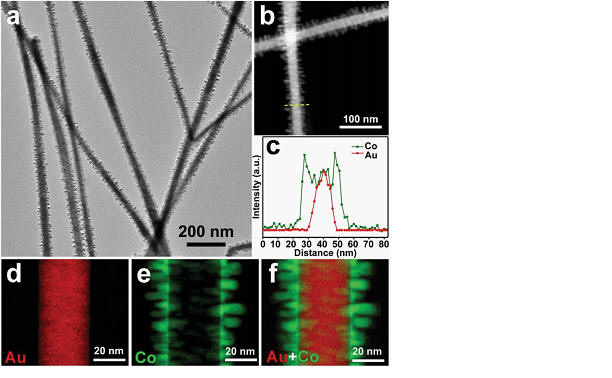Quasi‐Epitaxial Growth of Magnetic Nanostructures on 4H‐Au Nanoribbons

PrivacyPrivacy Facebook Twitter Linkedin Reddit Word to Clean HTML ConverterWord Editor HTML Undo New page indentation compress encoding option ico option2 option3 option4 option5 option6 option7 option8Clean -
Published on Advanced Materials (26 November 2020)
Author(s): Hongfei Cheng, Nailiang Yang, Xiaozhi Liu, Yilv Guo, Bin Liu, Jianhui Yang, Ye Chen, Bo Chen, Zhanxi Fan, Qipeng Lu, Shijun Yuan, Jinlan Wang*, Lin Gu*, Hua Zhang*
Abstract
Phase engineering of nanomaterials is an effective strategy to tune the physicochemical properties of nanomaterials for various promising applications. Herein, by using the 4H‐Au nanoribbons as templates, four novel magnetic nanostructures, namely 4H‐Au @ 14H‐Co nanobranches, 4H‐Au @ 14H‐Co nanoribbons, 4H‐Au @ 2H‐Co nanoribbons, and 4H‐Au @ 2H‐Ni nanoribbons, are synthesized based on the quasi‐epitaxial growth. Different from the conventional epitaxial growth of metal nanomaterials, the obtained Co and Ni nanostructures possess different crystal phases from the Au template. Due to the large lattice mismatch between Au and the grown metals (i.e., Co and Ni), ordered misfit dislocations are generated at the Co/Au and Ni/Au interfaces. Notably, a new super‐structure of Co is formed, denoted as 14H. Both 4H‐Au @ 14H‐Co nanobranches and nanoribbons are ferromagnetic at room temperature, showing similar Curie temperature. However, their magnetic behaviors exhibit distinct temperature dependence, resulting from the competition between spin and volume fluctuations as well as the unique geometry. This work paves the way to the templated synthesis of nanomaterials with unconventional crystal phases for the exploration of phase‐dependent properties.

Read more: https://doi.org/10.1002/adma.202007140